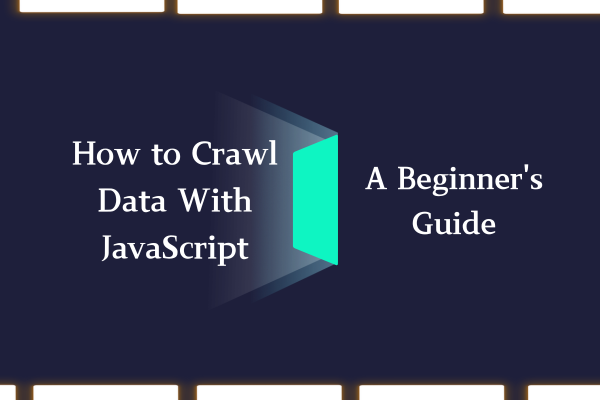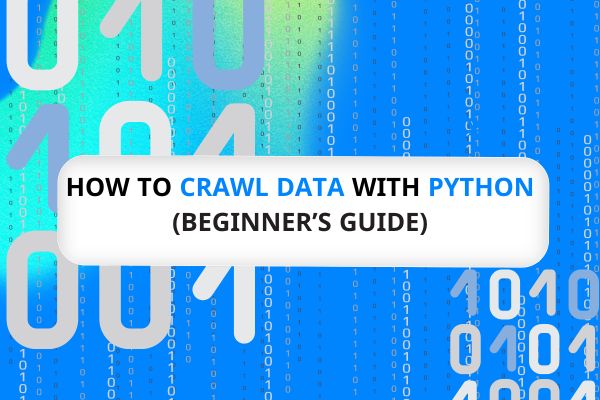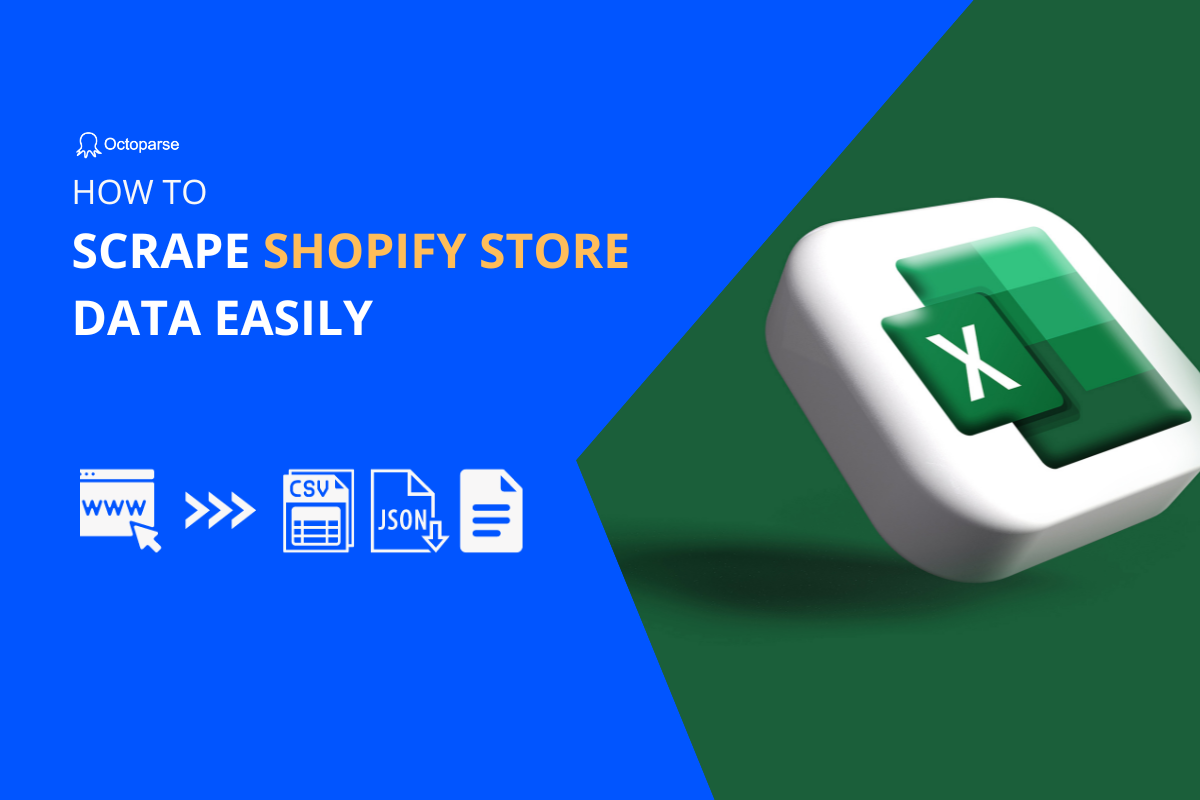Data crawling is used for data extraction and refers to collecting data from either the worldwide web or from any document or file. The need for web database crawling has been on the rise in the past few years. The data crawled can be used for evaluation or prediction purposes under different circumstances, such as market analysis, price monitoring, lead generation, etc. Here, I’d like to introduce 3 ways to crawl data from a website, and the pros and cons of each approach.
Use Ready-to-Use Crawler Tools
Are non-coders excluded from web crawling? The answer is “no”. There are ready-to-use web crawler tools that are specifically designed for users who need data but know nothing about coding.
1. Octoparse
With Octoparse, you can interact with any webpage element and fully customize your data extraction workflow. It supports task-level customization to meet all your scraping needs.
Octoparse offers four subscription plans: one Free Edition and three Paid Editions. The Free Edition covers basic crawling needs, while Paid Editions unlock Cloud-based services for faster, large-scale data extraction.
Paid plans also support anonymous proxies, letting your tasks rotate IPs automatically to avoid detection and blocking.
You can connect your system to Octoparse via API for real-time data access—either syncing data into your own database or calling it through API requests. After configuring your task, export options include CSV, Excel, HTML, TXT, or databases like MySQL, SQL Server, and Oracle.
2. Mozenda
Mozenda is another user-friendly web data extractor. It has a point-and-click UI for users without any coding skills to use. Mozenda also takes the hassle out of automating and publishing extracted data. Tell Mozenda what data you want once, and then get it however frequently you need it.
Plus, it allows advanced programming using REST API the user can connect directly with the Mozenda account. It provides the Cloud-based service and rotation of IPs as well.
3. ScrapeBox
SEO experts, online marketers, and even spammers should be very familiar with ScrapeBox with its very user-friendly UI. Users can easily harvest data from a website to grab emails, check page rank, and verify working proxies and RSS submission.
By using thousands of rotating proxies, you will be able to sneak on the competitor’s site keywords, do research on .gov sites, harvest data, and comment without getting blocked or detected.
4. Google Web Scraper Plugin
If people just want to scrape data in a simple way, I suggest you choose the Google Web Scraper Plugin. It is a browser-based web scraper that works like Firefox’s Outwit Hub. You can download it as an extension and have it installed in your browser. You need to highlight the data fields you’d like to crawl, right-click and choose “Scrape similar…”. Anything that’s similar to what you highlighted will be rendered in a table ready for export, compatible with Google Docs.
However, the latest version still had some bugs on spreadsheets. Even though it is easy to handle, it can’t scrape images or crawl data on a large scale.
Pros & Cons of Using Ready-to-Use Crawler Tools
🥰Pros:
- Easy to pick up and non-coder friendly.
- Applicable to all different kinds of websites.
- Cost-efficient, no huge upfront charges, and many offer free editions.
🤯Cons:
- Lack of customization options for complex data acquisition projects.
- Each web scraping tool works a bit differently, so you’ll need to play around to find one that best suits your needs.
- Just like any other skill, you’ll be required to spend time on it and work your way up in developing expertise with the tool.
If you are still confused about how to get started with data crawling, the video below may shed some light on it.
Use Website APIs
What is an API
“An API in its simplest form is simply a bit of code that allows for two software programs to communicate with each other. It works to either permit or deny outside software to request information from the main program.” (explained in What is Application Programming Interface (API)?) An API enables companies to open up their applications’ data and functionality to external third-party developers, business partners, and internal departments within their companies. It allows services and products to communicate with each other and leverage each other’s data and functionality through a documented interface.
How do the APIs work
Many large social media websites, like Facebook, Twitter, Instagram, and StackOverflow, provide APIs for users to access their data. Sometimes, you can choose the official APIs to get structured data. For example, the Facebook Graph API allows developers to access public profile data, posts, and interactions. You can select specific fields, send requests via structured URLs, and retrieve JSON-formatted data. See the Graph API guide
Pros & Cons of Using APIs to Crawl Data
🥰Pros:
- High speed of exchanging requests and responses
- Internet-based connectivity
- 2-way communication with confirmations included within the reliable transaction sets, user-friendly experiences, evolving functionality
🤯Cons:
- High cost of implementing and providing API capabilities considering development times, ongoing maintenance requirements, and providing support
- Unfriendly to non-programmers since APIs require extensive programming knowledge
- Insecurity is caused by adding another potential attack layer to programs and websites.
Build a Web Crawler
Not all websites provide users with APIs. Certain websites refuse to provide any public APIs because of technical limits or other reasons. In such cases, some people may opt for RSS feeds, but I don’t suggest using them because they have a number limit. What I want to discuss here is how to build a crawler on our own to deal with this situation.
What Is a Web Crawler and How Does It Work
How does a crawler work? A crawler, put it another way, is a tool to generate a list of URLs that can be fed into your extractor. The crawler can be defined as a tool to find the URLs. Give them a webpage to start with, and they will follow all these links on that page. This process then keeps going on in a loop.
How to Build a Web Crawler Using Python and BeautifulSoup
Then, we can proceed with building our own crawler. It’s known that Python is an open-source programming language, and you can find many useful functional libraries.
Here, I suggest the BeautifulSoup (Python Library) for the reason that it is easier to work with and possesses many intuitive characters.However, BeautifulSoup does not fetch the web page for us. Hence I use urllib2 to combine with the BeautifulSoup library.
Generally speaking, to build a basic web crawler, we’ll use two Python libraries:
- urllib.request: Fetches HTML pages
- BeautifulSoup: Parses and extracts HTML content
Then, we need to deal with HTML tags to find all the links within the page’s <a> tags and the right table. After that, iterate through each row (tr) and then assign each element of tr (td) to a variable and append it to a list. Let’s first look at the HTML structure of the table (I am not going to extract information for table heading <the>).
This script connects to a webpage, parses the HTML, and extracts all URLs found in tags.
Suppose you want to crawl a table on a page. Here’s how to extract rows and columns:
⚠️ Tip: Avoid extracting data from <thead> if you only need table content.
This method lets you iterate through each row (<tr>) and extract column data (<td>), then store it in a list for further use.
Pros & Cons of Building Your Own Crawler
🥰Pros:
- The customized crawler with the whole process within your control
- Proxies available for preventing the crawler from being blocked by some websites
- Friendly to people with coding skills
🤯Cons:
- Time-consuming to crawl a website on your own by programming
- Unfriendly to people without any coding skills (Alternatively, the no-coders can hire a freelance web scraping developer. But both learning to program and hiring some professional people are approaches adding overheads to the data collection operations)
Conclusion
Crawling website data can be done through APIs, Python scripts, or ready-to-use tools. For most users, especially non-coders, Octoparse is the fastest and easiest way to scrape data without technical hassle. It handles dynamic content, avoids IP bans, and supports bulk extraction with just a few clicks.
FAQs
- How does a crawler decide which pages to visit on a website?
A crawler typically starts from a seed URL and follows all internal links it discovers. To stay efficient and avoid crawling irrelevant pages, you can set URL patterns, depth limits, or domain restrictions to guide the crawler’s behavior. To keep the crawl focused and efficient, tools like Octoparse let you define page limits and set specific XPath rules to guide the crawler. These settings help avoid irrelevant pages, reduce server load, and improve data quality—making your crawling both faster and safer.
- Why is respecting robots.txt important when crawling a website?
The robots.txt file tells crawlers which parts of a website they’re allowed or disallowed to access. Ignoring it may violate a site’s terms of service and can lead to your IP being blocked or even legal consequences. Ethical and efficient crawling always starts with respecting robots.txt.
- How can I extract specific data like PDFs or images during crawling?
To extract files like PDFs, images, or videos, configure your crawler to identify and follow or tags with specific file extensions (e.g., .pdf, .jpg). You can then download these files using tools like requests, wget, or scraper platforms with file download support. Tools like Octoparse can support this workflow by allowing users to locate and extract such file URLs with only a few point-and-click actions. Once the links are captured, users can export them and download the files to their local devices with ease.




